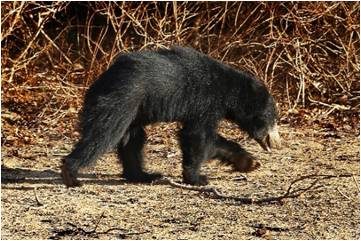Episode 6 – Wasgamuwa National Park

Face to face with poachers
This incident occurred on the 17th January 2017. At the time, I was the Warden of the Wasgamuwa National Park, with three years of service in the Wildlife Department under the belt.
During my time in the Wildlife Department, we received a plethora of information on illegal activities, including but not limited to unsanctioned tree-cutting, poaching, gem-mining, etc. On that fateful day, we gotword of a group of poachers who had been sighted in the‘Sansthapitiya’ area, which is located within the Wasgamuwa National Park. I, along with Ranger Chinthana Bandara, Wildlife Guard Chithralal Bandara, Field Assistants Saliya Bandara and Shantha Sriyananda deployed from the Main Office at around 3:30 pm to confront the no-do-wells.
By the time we arrived, at around 6:45 pm, the sunset had given way to creeping darkness in the thick forest. We set up our guard and not long after, noticed movement of what could only be that of the poachers. We were able to distinguish five individuals, armed with two guns and several torches, approaching our position in the abysmal light. As soon as they came close enough, we made our presence clear by springing into action and demanding they surrender.
So far, in all my experience participating in raids, it is often the case for suspects to surrender to authorities when confronted, intimidated enough to put up little to no fight at all. Perhaps, the experience of past raids occurring smoothly had made us lax, for we were not all ready for the suspects to stand their ground.
The sound of gunfire boomed through the air, an unnatural noise disturbing the peace of the quiet, dark forest. Once we were able to dodge out of the line of fire, we began returning fire towards the hostiles. This chaos continued on for a while, until I heard the unmistakable cry of anguish of someone who got hit with a bullet. Then the firing from the hostiles stopped, and we followed suit. After gaining our bearings, to our great relief, we saw that none of us had a gunshot wound. We walked over towards the direction of the offenders, and the torchlight showed us that one of them had suffered a shot to the side of the head, courtesy of a bullet fired out of a shotgun from our side. Miraculously, he was still breathing, for the bullet had not completely found its mark. By that time, every single one of the poachers knew that it was game-over. They were out-manned and outgunned, they surrendered for us to apprehend them. Soon after, we took the gunshot victim to the nearest hospital. At around 8:30 pm, the hospital announced that he had succumbed to his injuries.
The Department of Wildlife Conservation has filed a case against this incident and the case is still ongoing.
[Since the case is ongoing, exact descriptions on the shootout were not included in the story].
Dilip Dilantha Samaranyake
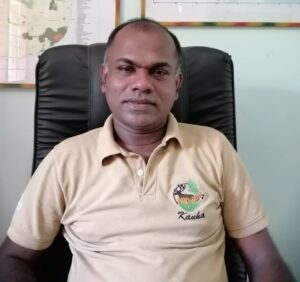
Mr.Dilip Dilantha Samaranayake is currently working as the Park Warden of the Kumana National Park. He has worked in various National Parks in Sri Lanka. Yala, Udawalawe, Lunugamvehera, Wasgamuwa, Legal Division of the Head Office, Walawa Left Bank are some of the places where he has worked. Mr.Dilip Samaranayake is a loving father of two sons, resides at Wellapitiya, Horana.
Wasgamuwa National Park
Wasgamuwa National Park (WNP) is located in the Polonnaruwa and Matale districts and is spread over the North Central and Central Provinces of Sri Lanka. It is home to nearly 300 species of wildlife and is bordered by the Mahaweli River on the East and the Kalu and Amban rivers on the West to the North. During the launch of the Accelerated Mahaweli Development Scheme in 1977, forests and wildlife habitats were severely lost. It is one of the four national parks declared under the Mahaweli Development Project in 1984 to provide protection to the displaced wildlife. Wasgamuwa National Park.MaduruOya, Somawathiya and Minneriya National Parks are the other national parks that have been declared as such.
Wasgamuwa National Park was declared on 7thAugust 1984 and covers an area of approximately 37,062.9 hectares. Wasgamuwa National Park is located at a distance of 225 km from Colombo and it is a place of ecological and biodiversity value.


Ruins of canals such as the Kalinga Yoda Ela, Malagamuwa, Wilmitiya and Dastota, which are believed to have been built during the reign of King Parakramabahu I era of 1153-1186, can still be seen in the Wasgamuwa National Park which is enriched with water sources.Yudaganapitiya, the battlefield where King Dutugemunu and King Elara are believed to have encamped is also located in Wasgamuwa National Park and the Arahants who suspected that the battle would be an obstacle to the future of the Sasana, the mountain that was created to prevent it iscalled ArahantMavu Kanda (රහතුන් මැවූ කන්ද). The park is considered to be a famous cultural site as 1800-year-old Buddha statue and a number of ancient stone pillars are located.
Climatic conditions akin to arid and intermediate zones are exist and it is mostly affected by the Northeast monsoon rains in October-February. Although the inter-monsoon rains occur in March-May, the best time to visit is June-September, when the rainfall is low. Annual rainfall ranges from 1,750 mm in the north to 2,250mm in the south. The average annual temperature is around 27 degrees Celsius and there are slight variations throughout the year. During the Southwest monsoon season (May-August) the wind speed is high and dry and during the north-east monsoon it is low and humid.
The park is located in three drainage basins of the Mahaweli River i.e., Amban River and Kalu River and is fed by streams such as KarapanaEla, KiruleEla, VeddigeEla, PalugahaEla, MidiraneEla, NawagahaEla and WasgamuOya. The rivers in the park are fed by streams that flow from the spectacular White Mountain, which is usually about 470 m above sea level. Rivers and the upper water catchment areas of the park have reddish brown soil as well as silty soil. The area is also rich in mineral resources such as condolite, thiruvana and marble. The high biodiversity of the National Park is also due to the increase in soil fertility and (topographical?) diversity due to the four rivers that flow through the park.
Wasgamuwa Forests represent the dry evergreen forests of Sri Lanka and showcase the highest biodiversity in Sri Lanka, including primary forests, secondary forests, riverine forests, and grasslands, thorny and rocky areas. More than 150 plant species have been reported from the park. Aquatic herb Cryptocoryne walkeri and medicinal herb Binkohomba are two rare species of plants of economic value. The forest consists of several layers and the upper layer plants are satin, palu, velan, kaluwara, milla, weera and halmilla plants and other layers of plants such as divul, red va and katupila associated with the scrub forest.
Reservoirs and riverine forests support large species, with 23 species of mammals, 149 species of birds, 8 species of amphibians, 17 species of reptiles and fish which are the habitantsof the Wasgamuwa Park.
About 17 species and about 50 species of butterflies live there. Of these, two are endemic, six are endangered, eight are endangered, nine are endangered, five are endangered and eight are endangered.A herd of 150 Sri Lankan wild elephants roaming in the Mahaweli River area in the National Park, also known as Lake Elephants.
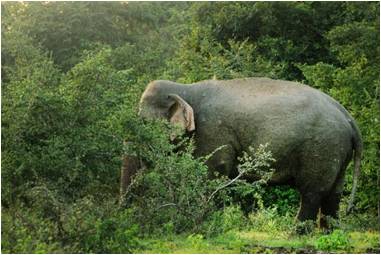
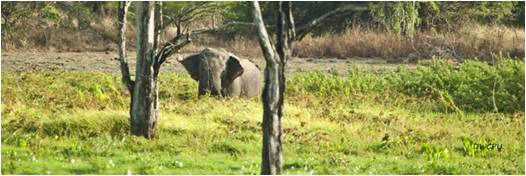
Wild Elephants can easily see in the park
Animals such as the great monkey and parrot, fox,Gray Slender Loris, leopard, wild boar, grass-roaming wild buffalo and spotted deer are common in Wasgamuwa national park, while rare leopards and bears are rarely seen.
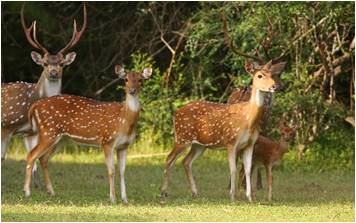
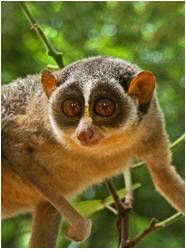
Among the birds, 143 species of birds of Sri Lanka can be seen in the park and the Red faced Malkoha, Bahurumanaawa, golden forehead kottoruwa, Sri Lankan SiluMahakuda, HabanKukula and alukedeththa found in the park are of special interest.

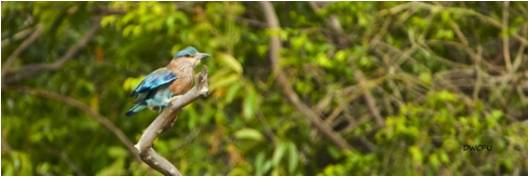
Among the endemic and endangered species that live here are; the amphibian, the Ceylonwood frog, and several species of reptiles. These include reptiles, such as the Sripada forest skink lizard, thered lipped lizard and earleslizard, and among the snakes Ceylon fling snake and reptiles such as, Land monitor lizard Mugger crocodileand Asian water monitor can be seen while an endemic fish species, Ceylonlog suckeris also found in the reservoirs. Many butterflies can be seen flying around the park and 50 species of butterflies have been recorded.
There are three tourist lodges for residential facilities at Kadurupitiya, Vavul Abe and Mahaweli (by the river) in the parks and at the Fourth Junction, Mahaweli 1, Medapitiya 1/2, VavulEbe and the Seven Springs camps bookings are done from the office.


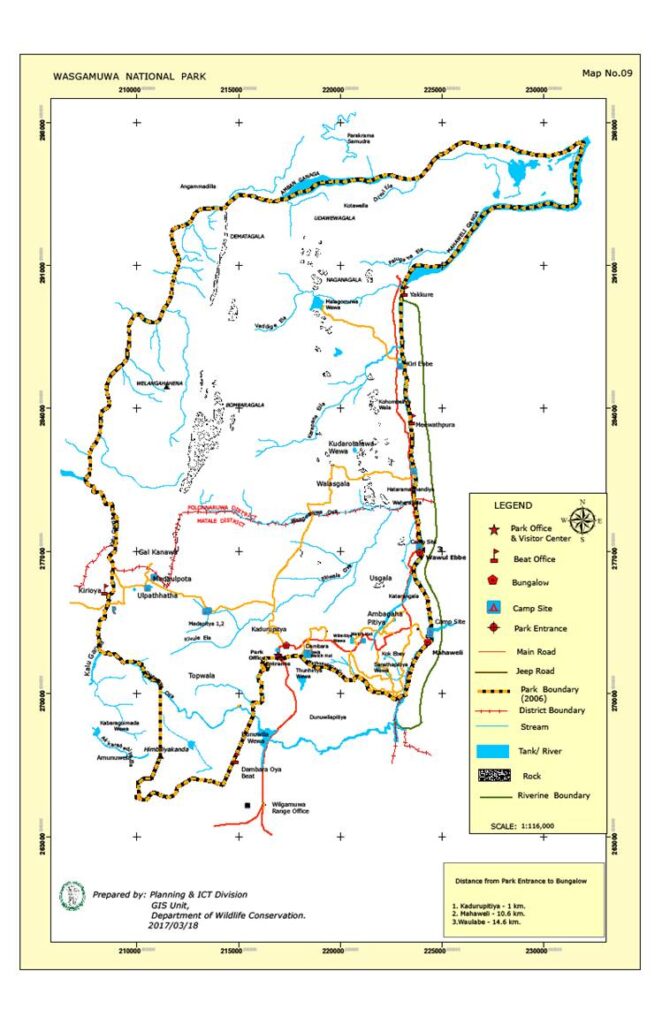
List of animals in the Wasgamuwa documentary
| Sinhala name | Tamil name | English name | Scientific name |
| අලියා | காட்டு யானைகள் | Asian elephant | Elephas maximus |
| මහ වදුරා | மந்தி | Southern Purple faced langur | Semnopithecus senex |
| රිළවා | சிறு குரங்கு | Toque Macaque | Macaca sinica |
| හිවලා | நரிகள் | Golden jackal | Canis aureus |
| උනහපුලුවා | தேவாங்கு | Gray Slender Loris | Loris lydekkerrianus |
| වල් ඌරා | காட்டுப் பன்றிகள் | Wild Boar | Susscrofa |
| වල් මී හරකා | காட்டு எருமைகள் | Water buffalo | Bubalus bubalis |
| තිත් මුවා | புள்ளி மான் | Spotted deer | Axis axis ceylonensis |
| කොටියා | புலி | Leopard | Ardeacinerea |
| වලසා | கரடி | Sloth bear | Melursus ursinus |
| වතුරතු මල්කොහා | சென்முகப் பூங்குயில் | Red- faced malkoha | Phaenicophaeus pyrrhocephalus |
| වලි කුකුළා | இலங்கை காட்டுக்கோழி | Sri lanka junglefowl | Gallus lafayetill |
| බහුරුමානාවා | சிறுத்த பெரு நாரை | Lesser adjutant | Leptoptilos javanicus |
| රන් නළල් කොට්ටෝරුවා | குக்குறுவான் | Yellow-fronted barbet | Megalaima flavifrons |
| ශ්රී ලංකා සිළු මහාකවුඩා | தீக்காக்கை | Srilanka trogon | Harpactes fasciatus |
| හබන් කුකුලා | சின்னக் காட்டுக் கோழி | Srilanka Spurfowl | Galloperdix bicalcarata |
| අළු කෑදැත්තා | இலங்கை சாம்பல் இருவாய்ச்சி | Srilanka grey hornbill | Ocyceros gingalensis |
| ලංකා බැදි මැඩියා | இலங்கை மரத் தவளை | Sri Lanka wood frog | Rana gracilis |
| ලක්හීරළුවා | இலங்கை அரணை | Sripada forest skink | Lankascincus sp |
| තොල විසිතුරු කටුස්සා | சிவப்பு உதட்டுப் பல்லி | Red lipped lizard | Calotes ceylonensis |
| දුම්බොන්නා | இந்தியன் ரோலர் | Indian roller
| Coracias benghalensis |
| පිණුම් කටුස්සා | பெரிய காது இல்லாத பல்லி | Earles’s lizard | Otocryptis wiegmanni |
| දගර දණ්ඩා | இலங்கை பறக்கும் பாம்பு | Sri Lanka fling snake | Chrysopelea taprobanica |
| තලගොයා | உடும்பு | Land monitor lizard | Varanus bengalensis |
| කබරගොයා | நீர் உடும்பு | Asian water monitor | Varanus salvator |
| හැල කිඹුලා | சதுப்பு முதலை | Mugger crocodile | Crocodylus palustris |
| ගල්පාඩියා | கல்பாடியா | Ceylon logsucker | garra ceylonensis |
List of trees in the Wasgamuwa documentary
Sinhala Names | Tamil Names | English Names | Botanical Name |
පලු | பாலை | Ceylon Iron wood | Manilkara hexandra |
වීර | வீரை | Hedge Boxwood | Drypetes sepiaria |
බුරුත | முதிரை | Satin | Chloroxylon swietenia |
මිල්ල | காட்டு நொச்சி | Milla | Vitex altissma |
වෙලන් | வெண்ணங்கு | Welan | Pterospermum canescens |
හල්මිල්ල | சாவண்டலை மரம் | Halmilla | Berriya cordifolia |
කළුවර | கருங்காலி | Ebony | Diospyros ebenum |
දිවුල් | விளா | Divul | Limonia acidissima |
රතුවා | ரது வா | Rathuwa | Cassia roxburghii |
කටුපිල | வெட்புலா | Katupila | Flueggea leucopyrus |
Editor – Dammika Malsinghe, Additional Secretary, Ministry of Wildlife and Forest Conservation (MWFC)
Article on park written by – Hasini Sarathchandra, Chief Media Officer, Department of Wildlife Conservation (DWLC)
Tamil Translations – A.R.F. Rifna, Development Officer, MWFC
English Translations (Documents) -Asoka Palihawadana, Translator, MWFC
English Interpretation (Story) -Thanuka Malsinghe
Web Designing – N.I.Gayathri, Development Officer, MWFC
Photography – Rohitha Gunawardana, Mahesha Chathurani Perera (Graduate Trainee), DWLC
